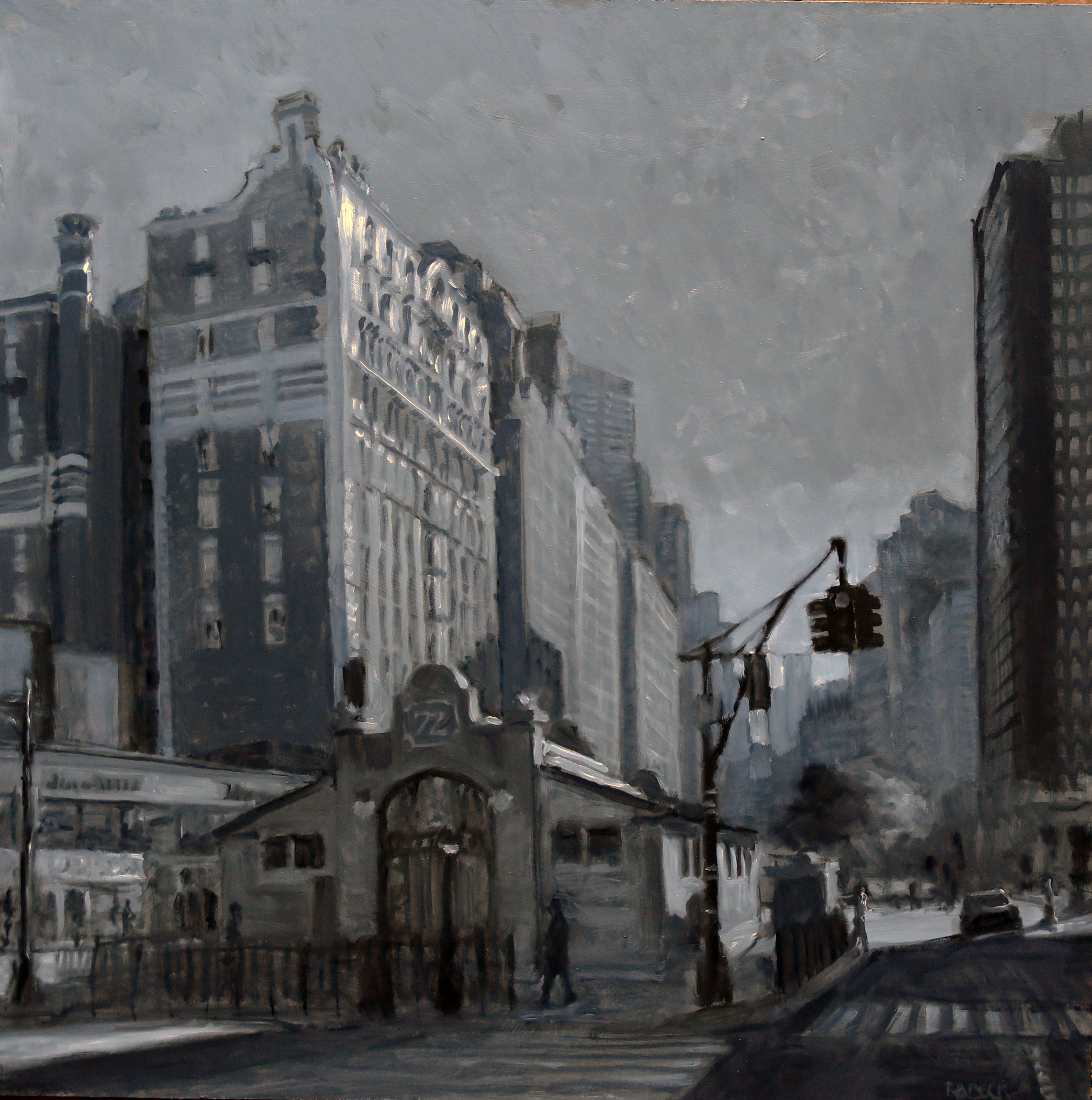
The Basics
By Robert Beck
Photography was more complex and less available before the digital age. My dad had a darkroom in the basement, where I learned to appreciate the language of light. Apartment dwellers with a passion for taking pictures would set up darkrooms in their closets. Now everyone has a camera at their fingertips, and in the city, somebody lives in the closet. More than a century was defined by black & white photos, but that genre, especially chemical printing, has become a niche, artisan practice. We’ve arrived at a point with digital manipulation where photographs can’t be trusted. Of course, paintings never could.
Many of my New York memories are black & white. I’m greatly influenced by my father’s photos, along with those afternoons as a kid spent after school watching programs on our b&w television. Magazines and movies turned the world to color, but it was dazzle, and you could tell a good story without it; sometimes better. Black & white has determination. It comes in the door with an edge, talking tough in a fedora. It suggests that the viewer consider the content and not be distracted by the prettification.
I wasn’t sure which view of the original headhouse at the 72nd St. station I wanted to paint, and I walked around imagining how it could be described from various locations. I looked through the door glass on the north side, watching people pay their fare and go down to the platform. One guy waited until the others were through, then he took off his backpack and ducked under the turnstile. He was down the stairs in a flash. Obviously, he makes a practice of it; he had the moves down pat. I wondered if I would be thrown out if I set up my easel inside there. Of course I would.
It’s not so much the building’s details that attracted my attention as that Mission-like design. It sits squat in the open square, ringed at a distance by shoulder-to-shoulder high-rise buildings held in abeyance by…what? Time, I suppose. For now, it looks like a subway station outside of Albuquerque. There is sky and clouds overhead, and air. If a sunny day happens, you can find it right here. It’s a place where a New Yorker might be tempted to look up.
To contact Robert Beck or see more of his work, visit robertbeck.net
Read all our Weekend Columns here.










My favorite yet!
Agree
Lovely painting and a smart essay. Great way to start the weekend. Thanks, Robert.
Love this painting and would love to see more.
What a wonderful post. I too grew up with an amateur photographer for a dad and learned from him how to look at things in the world. I treasure his old black and white photos. Beautiful painting Mr. Beck.
Lovely. I went to Barnard College and the image brought back many fine
memories of the UWS. Thank you, Robert
Remember (movie Director) Sam Fuller’s quote: Life is in color, but black & white is more realistic.
Robert Beck is eloquent in two media.
What a beautiful essay! And the Painting too. Just loved it, Mr Beck. Thank you
My father also had a basement darkroom, where developed a photo of his son (me) on the beach at Atlantic City. It won an award at the 1939 world’s fair. I now use a DSLR which can give me black and white as well as color photos. A B&W portrait of my wife is my computer home page. Thanks for your creativity and obvious love of this city.
Thanks for a perceptive post that makes me feel positive toward the positive influence of technology on our sentience. consider and admire how phone cameras have created a whole generation of people who now see the world through a different new angle.
I went to Barnard too, and a quick glance made me think the kiosk was the former one at 116th and Broadway that has long since been removed. The story I had always heard about the reason for its removal was that students were running across the street to catch the subway, and getting killed. That’s why I always wondered why the city put up the hideous kiosk at 96th street and Broadway.
I’m from Philadelphia, but learned on a Nikkormat as a ten and had my own darkroom by high school. I miss those days, but didn’t take photos for three decades once I moved to Manhattan until I got my first iPhone ten years ago. Now it’s practically all I use it for! I shoot in color, but still collect occasionally — not only black and white, but vernacular photography in sepia.